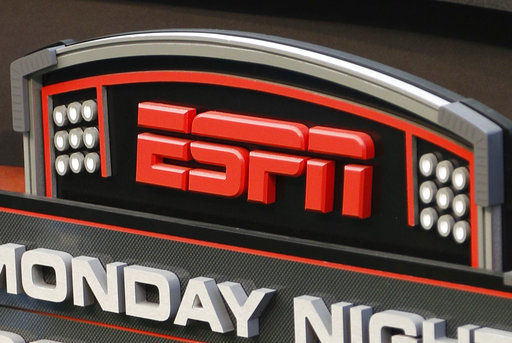
COMMENTARY
The big news that came out of Disney’s earnings conference call earlier this week was that Disney was going “over the top,” an industry phrase that means that it plans to start a stand-alone streaming service untethered to a cable television subscription. Two, in fact. One will stream Disney’s unparalleled library of movies, which are currently licensed to Netflix, while the second will stream ESPN, the cable-sports behemoth that was once Disney’s cash cow and is now its Achilles’ heel, to mix a few metaphors.
From one perspective, it is obviously the right move. Robert Iger, the company’s 66-year-old chairman and chief executive, has been talking for years about the need to “go where the customers are.” That’s the internet, and now he’s finally made the move. There’s really no good reason for Disney to depend on Netflix to distribute its movies. As for ESPN, with its cable subscriptions in steep, seeming irreversible decline — falling between 2 and 3 percent each quarter — Iger had to do something.
The movie app has the potential to be a big money-maker, especially if Disney bundles everything into it — not just children’s fare, but the Star Wars films, its television catalog, its classic movies, and so on — to keep churn to a minimum. (That’s the Netflix strategy.)
ESPN, however, is a different story, for two reasons. First, there is zero possibility that a streaming service, no matter how good, will be able to make the kind of money that ESPN made as recently as three years ago. Secondly, the ESPN app, at least as it was outlined by Iger during the earnings call, simply isn’t going to be very good.
The core economic issue is this: Cable companies pay the Walt Disney Co. an average of $7.21 per subscriber for ESPN, according to the media-news service SNL Kagan, triple that of other popular cable channels. And because of the way the cable bundle works, the operators end up passing the cost along to many customers who don’t watch sports and don’t want ESPN. That’s why so many people hate the cable bundle, and why cable bills are so high.
So it is hardly a surprise that as people began to have more options, including bundles without sports channels, they’ve been abandoning ESPN. Even many sports fans have concluded they can live without ESPN. “ESPN is in secular decline,” says Rich Greenfield of the investment firm BTIG, who has had a “sell” on Disney’s stock since 2015.
At the same time, ESPN is paying staggering sums for professional sports rights, more than $7 billion in total, again according to SNL Kagan. Fewer subscribers plus higher rights fees equals profit squeeze. Which is exactly ESPN’s dilemma.
But a streaming service, while it might attract sports fans who have cut the cord, won’t solve ESPN’s profit problems. Instead it will exacerbate them. Why? Because ESPN will continue to lose the millions upon millions of cable subscribers who pay for it but never watch it. Losing $7.21 from each non-watcher is going to be a revenue killer. There is no possible way the universe of sports fans who want ESPN can make up that revenue, even if they’re charged more for a streaming service.
To make matters worse, Disney appears to be planning a streaming service that even the most rabid sports fan will be reluctant to pay for. All the good stuff — big-time college football, professional basketball, the Sunday night National Football League game — will remain exclusively on ESPN’s cable channels. The streaming service will get, well, other things. It’s pretty clear that Iger is still trying to protect Disney’s legacy cable business, and that his move to the internet is not exactly a wholehearted embrace.
The reality is that the glory days are over for ESPN. Instead of making the $6.4 billion it earned in 2014, it’ll soon be earning $2 billion or less. Iger, or his successor, will have to decide whether to invest in it or to let it hobble along in its diminished shape. Disney will have to decide whether to keep paying megabucks for professional sports rights — thinking of them as loss leaders like the Olympics for NBC — or whether to give up those rights to save money. If it does the former, ESPN’s profits will dwindle even more. If it does the latter, fewer sports fans will want to subscribe.
I’ve been in the magazine and newspaper business my whole working life. I’ve watched the same forces diminish my industry. My former employer, the New York Times, has millions more viewers and subscribers than it ever did when print reigned supreme. Yet it is barely profitable, because the internet destroys a media company’s advertising base and the Times can’t charge subscribers as much as it could charge when readers were buying the dead tree version.
Disney is facing the television equivalent. Its ESPN streaming service will have subscribers, but not nearly as many as it had in the heyday of cable television. If all goes well, it will generate a third of the revenue. Its advertisers will buy time for a fraction of what it cost them to advertise on television. Cable subscribers will continue to find ways to stop paying for ESPN.
And it all may be completely necessary. But it sure won’t be fun for Bob Iger.
Joe Nocera is a Bloomberg View columnist.
Make it your business. Get twice-daily updates on what the St. Louis business community is talking about.
[“Source-gearsofbiz”]